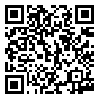BibTeX | RIS | EndNote | Medlars | ProCite | Reference Manager | RefWorks
Send citation to:
URL: http://tumj.tums.ac.ir/article-1-382-en.html

 , Ali Reza Khosravi
, Ali Reza Khosravi 
 , Vahid Khalaj
, Vahid Khalaj 
 , Mahboubeh Hajiabdolbaghi
, Mahboubeh Hajiabdolbaghi 
 , Ali Asghar Khaksar
, Ali Asghar Khaksar 
 , Mehrnaz Rasoulinejad
, Mehrnaz Rasoulinejad 
 , Mir Saeed Yekani Nejad
, Mir Saeed Yekani Nejad 

Normal
0
false
false
false
EN-US
X-NONE
AR-SA
MicrosoftInternetExplorer4
Background: Oropharyngeal candidiasis is the most frequent fungal
infection in HIV patients. The aims of this study
were to appraise prevalence of oropharyngeal candidiasis and to determine
factors associated with oropharyngeal candidiasis and oral yeast colonization
among Iranian HIV patients.
Methods: The patients were composed 150 Iranian HIV positive individuals referred to Iranian Research Center for HIV & Aids (IRCHA), Imam Khomeini Hospital complex
in Tehran, Iran. Oral samples were obtained and cultured on mycological media. TCD4 lymphocyte count/percentage was
measured and patients were categorized. Patients evaluated for some risk
factors for oropharyngeal candidiasis and oral candida colonization.
Results: Fifty nine percent of patients
were presented with oropharyngeal candidiasis and the carriage rate of yeasts
was 116 (77.2%). The most frequent isolated candida
species were Candida albicans (102) 50.2% and Candida glabrata (45) 22%. Thrush in 57(38%), perleche in 30(20%) and erythematous lesions in 7(4.7%) of patients were observed.
Significant differences in TCD4 count (p=0.01), gender (p=0.02), antifungal therapy (p=0.001), smoking (p=0.02), and intravenous drug use (p=0.03), between asymptomatic and
symptomatic patients were observed.
Conclusion: Oral candidiasis is a frequent complication among Iranian HIV individuals. C. albicans and C. glabrata are most important etiologic agents of oral candidiasis. In Iranian HIV individuals TCD4 count, antifungal
therapy, gender, smoking and intravenous drug use are important risk factors for oropharyngeal
candidiasis. Denture wearing and age are predisposing factors for oral colonization.
| Rights and permissions | |
 |
This work is licensed under a Creative Commons Attribution-NonCommercial 4.0 International License. |



